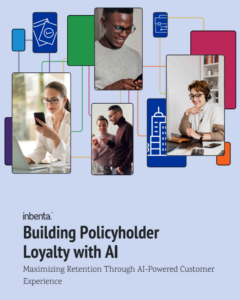2020 has been a challenging year for businesses all around the globe and has impacted customer service and operations.
As a new year starts, the business world undoubtedly needs to find solutions in order to face these new challenges. A recent survey shows that post-COVID-19, 59% of consumers will care even more about customer experience than they did in the “before times” when deciding which companies to support or buy from.
Any friction in a customer’s journey can make or break customers’ loyalty and have an impact on potential revenue. Luckily, technology keeps on adapting to help deliver tools that can make customer experience (CX) a truly seamless experience for companies and consumers.
So what are the trends that will shape CX in 2021 that organizations need to know in order to win customers’ business?
1. Customer service goes remote
One of the main consequences of the pandemic has been to force a big portion of employees to work remotely. The same goes for customer service departments, which have had to adapt and send their employees home.
Although remote working has plenty of benefits for both employees and businesses, adapting to this shift can be challenging. Teams working remotely need to learn new methods of providing effective customer service and experience from their homes. That means finding ways to share information and customer data. Implementing the right technology, allowing for remote collaboration and information sharing, will be the key for customer service teams when it comes to delivering an impeccable customer experience.
2. Improved interactions thanks to AI
Following the COVID-19 pandemic, one of the biggest challenges facing customer service teams is how to handle the increase in customer support inquiries, whatever channel they’re coming through (call, emails, social media platforms, etc).
For a few years now, Artificial Intelligence has been transforming the way companies interact with their customers. Customer service teams can now rely on AI tools such as intelligent chatbots or knowledge management systems to handle simple and repetitive tier-1 requests, leaving them with some time to manage more complex issues.
Self-service tools have been gaining popularity among customers as they result in lower wait times and fewer frustrated users. According to American Express, over 60% of Americans say that “their go-to channel for simple inquiries is a digital self-serve tool such as a website (24%), mobile app (14%), voice response system (13%) or online chat (12%).”
And the feeling is mutual from companies’ perspective: nearly 75% of IT decision-makers said that intelligent self-service automation ensured their organization was able to remain agile throughout Covid and 64% of these decision-makers expect their company to increase investment in automation technology as a result of the crisis.
3. Omnichannel and seamless communication
In 2020, many businesses were forced to close brick and mortar shops and to move their business solely online. They now need to adapt to that change and to develop new strategies in order to provide good customer service and experience in a virtual space.
A CGS study has shown that 20% of US and UK consumers prefer seamless omnichannel experiences – preferring not to repeat information with each new customer service interaction. This proves that consumers now expect to be able to connect with your brand immediately on their preferred platform, whether it’s Facebook, WhatsApp, email, or through the phone.
With 51% of businesses using at least eight channels for customer experience alone, it also highlights the urgent need for brands to focus on providing seamless omnichannel CX. Implementing the right tools will allow organizations to deliver a unified customer experience and treat all channels as equal, prioritizing queries based on importance and need rather than on a channel-by-channel basis.
4. Hyper-personalization
A surprising study showed that the majority of buying decisions are no longer based on things like price or convenience. Instead, 70% of buying experiences are based on how a customer feels they are being treated by a company.
Considering this and further data supporting the fact that customers value a friendly, efficient, and highly-personalized customer service experience, we can expect businesses to customize their CX in 2021 in order to meet customers’ expectations.
Customers need to feel valued and listened to throughout their journey with a brand and personalization is a great way to achieve this. Thankfully, technology once again can facilitate this process by enabling businesses to unify their data, segment customers, and enhance growth through tailored personalization.
5. Increased focus on data security and privacy
Security experts say that hackers are moving away from efforts to target individuals, and are instead targeting organizations that own customer data.
Despite the increased threat, customers are becoming more liberal with their personal data, and have been shown to be willing to give up their privacy in exchange for a valuable service. But they do so with the belief that brands will protect their data and only use it for the right purposes, such as to provide them with more relevant content.
With 61% of business leaders concerned that their data is at risk, there will be an increased focus on privacy and what brands do with data in 2021. Laws and regulations such as GDPR and the California Privacy Act (which won’t be active until 2023) will shape how companies manage customer data going forward.
Customer service teams should stay a step ahead and start working on the security tools that will enable them to be compliant with these laws and regulations, and secure customers’ data effectively.
There you have it, the top five customer experience trends to watch out for in 2021. You now know where your organization needs to target its efforts in order to deliver a seamless, personalized, and positive customer experience, and thus to ensure success.
Are you curious about intelligent automation and self-service tools?
You can try the Inbenta Customer Interaction Management Platform FOR FREE and see for yourself how you could help your customer service department.










